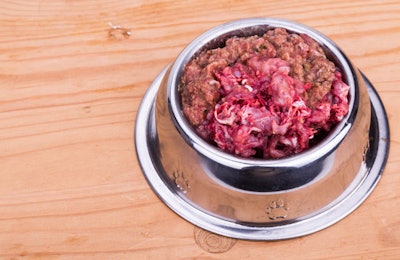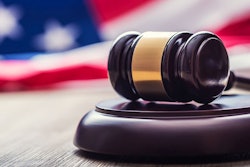
As demand for raw pet food continues to grow, pet food companies look to high pressure processing (HPP) to pasteurize their products and comply with food safety laws. Yet despite its importance, freely available scientific research on HPP lags behind long-established methods for pet food pasteurization.
“HPP is the preferred method as far as the FDA [US Food and Drug Administration] and USDA [US Department of Agriculture] are concerned so it comes with ‘credentials.’” Bette Schubert, Bravo Pet Food co-founder and senior vice president of sales, said. “As such, HPP is the best option for pathogen control, but there is no single methodology that is 100-percent effective.”
Schubert and her teammates at Bravo have explored a variety of options to target pathogens in their raw dog and cat foods, including ozone, phages, HPP and ultraviolet light.
“The key for us is to use methods that are highly effective in eliminating pathogens while yielding only minor changes to the characteristics and benefits of the products,” Schubert said.
Lack of high pressure processing research
Although dogs have been wolfing down raw meat since they literally were wolves, store-bought raw pet food appeared only with the past few decades, said Greg Aldrich, research associate professor at Kansas State University and Petfood Industry columnist. Commercial raw-meat pet food safety protocols lack the centuries of experience and technical guidelines that thermal processing, or cooking, enjoys.
“My understanding is that most prominent national brands that have raw food are going through some form of high pressure pasteurization,” he said. “It is new enough technology that a lot of people are sitting on their hand. They are leading the way with the technology, but not publishing papers on the topic.”
Despite this, dog and cat food companies use the technique because irradiation is often the only other readily available commercial-scale sterilization method, he said. Considering that raw pet food buyers are often searching for natural, minimally processed items, radiation is not much of an option.
“To comply with the law, my understanding is that high pressure processing is the only option,” said Aldrich. “[There's] no other real option [that] doesn’t disqualify the food as raw.”
How high pressure processing works
High pressure processing works by creating high pressure uniformly around a pet food container, usually in a sealed tank of water. That pressure is transferred instantly and equally throughout the raw pet food, according to the FDA.
Under this high pressure, disease-causing microorganisms and food-spoiling enzymes are deactivated. The technique works regardless of package size and shape, as long as the container can withstand the processing conditions.
The pressures used in HPP causes few physical changes to the ingredients since the pressure doesn’t seem to seriously affect covalent bonds (a type of atomic-scale attraction) in foods, according to research published in the book “Ultra High Pressure Treatments of Foods.”
“There are certainly significant added costs with HPP, which are ultimately passed along to the consumer, but they are more easily accepted knowing that these costs are in the interest of safety,” said Schubert.
High pressure processing costs result from operating pressure, hold time at pressure, and operating costs for maintenance, power and labor, according to FDA. The price of high pressure equipment increases exponentially with increasing operating pressure.
“The HPP process itself is not hard; however, in order to manage costs, it helps manufacturers who do not have their own in-house HPP system to be near a facility who can complete the process for them,” said Schubert.
Questions yet to be answered about high pressure processing
Although high pressure processing is widely used for raw pet and human foods, the exact mechanism by which the technique kills microorganisms hasn’t been nailed down, said Aldrich. The pressure may cause dormant pathogens to rupture, then other materials in the pet food leak in and kill the microorganism.
“The cell has been damaged and afterwards is where you get the actual kill,” he said. “When, where and how specifically, I’m not sure if anyone can share that publicly.”
The high pressure should kill the microorganisms, but there is some evidence that time must pass after processing disease-causing organisms could revive, he said. An abstract presented at an American Meat Science Association meeting offered evidence that immediately after processing the organisms were still viable.
Unlike heat pasteurization, scientists have yet to publish many of the precise combination of pressure and time needed to neutralize pathogens in specific combinations of ingredients, volumes and other factors in high pressure processing. Determining these specific combinations of pressure and time would help equipment companies and pet food companies, noted FDA. These combinations would need to be proven to inactivate key food pathogens such as E. coli O157:H7, Listeria spp., Salmonella spp., or Staphylococcus spp. in raw pet foods.
Despite the lack of published, standardized methods, raw pet food processors forge ahead with the technology, developing customized parameters for their proprietary recipes. As pet food consumers increase their interest in raw pet foods, so too scientists may give the technology more attention and subsequently publish more technical data. That research could contribute to standardized safety protocols, subsequently making future raw pet food production easier and safer.
The latest on pet food safety

















